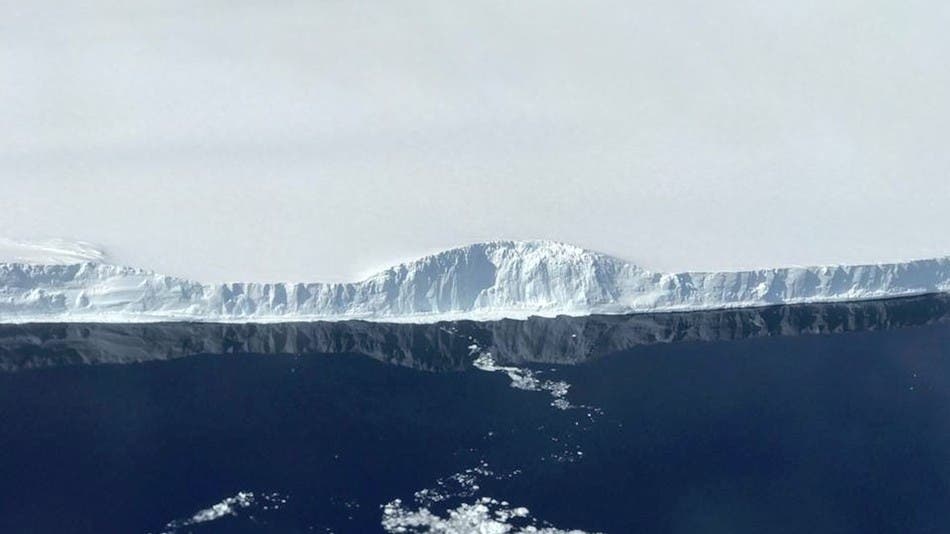Scientists taking part in a NASA-led initiative called Operation Icebridge recently surveyed a massive 2,200-square-mile iceberg which broke off from the Larsen C ice shelf in July. NASA researchers, flying overhead in a P-3 Orion aircraft, sighted the disturbingly huge iceberg firsthand from up above. Previously, all views of the iceberg had been obtained with remote sensing, primarily satellites. Now, the space agency released the first up close and personal images of the iceberg, clearly showing how it drifts away from the ice shelf.

The iceberg called A-68 is one of the largest ever observed on Earth. It’s about as big as the state of Delaware, and holds four times more ice than melts from Greenland’s ice sheet in a year. Scientists had been preparing for A-68’s split from Larsen C for months now, since witnessing a crack in the ice shelf extending over 100 miles in length.
Ice shelves encircle the Antarctic continent, extending thick floating ice from the land glaciers. Due to warming temperatures, Antarctica’s ice shelves are starting to thin or collapse. An iceberg such as A-68 won’t raise sea levels because the detached ice was already afloat in the ocean. That’s very good news since the A-68 holds enough mass to raise global sea levels by 3 millimeters had the ice been added anew to the ocean. However, events such as these destabilize the ice shelf. If an Antarctic ice shelf such as Larsen C collapses, it can free the ice it’s currently holding back on the Antarctic Peninsula. It’s this terrestrial ice flowing out that can raise sea levels, and by no negligible amount.

Researchers involved with Operation Icebridge are interested in collecting data that tracks changes in Antarctica’s ice cover. In the process, they will enrich their understanding of how ice shelves and the ocean interact, and to what extent climate change influences these interactions. Right now, the team is studying ice melt both above and below the water over which Larsen C extends so they might predict how icebergs might behave in the future.
As for A-68 itself, scientists aren’t sure about how it will progress. It could remain in one piece but it seems more likely the iceberg will fragment into many pieces. Some of these pieces will drift northward where they will melt, while others could stay afloat for decades.
The Larsen-C rift opening over the last 2 years from #Sentinel1 pic.twitter.com/MT9d3HAw1M
— Adrian Luckman (@adrian_luckman) January 31, 2017
The calving of Larsen C, which broke off A-68, is not necessarily the result of man-made climate change, though temperatures in the Antarctic peninsula have raised dramatically in past decades and this could have played a part. There is an ongoing debate in this sense, but there simply isn’t enough data to draw any definite conclusions yet.



